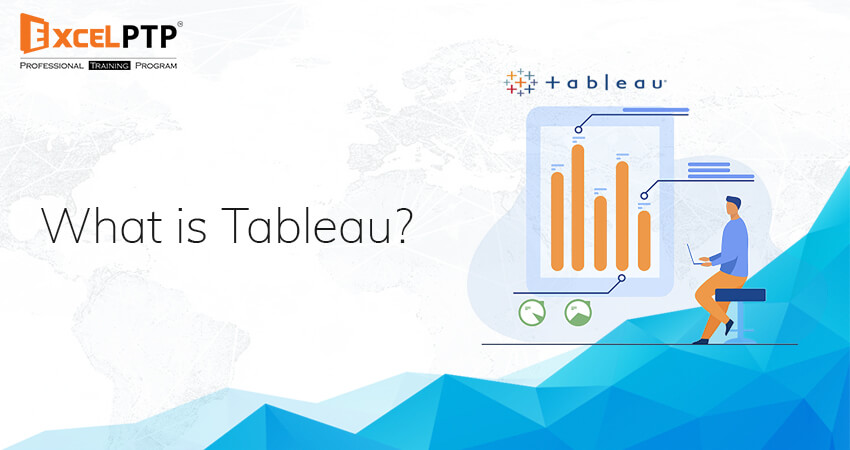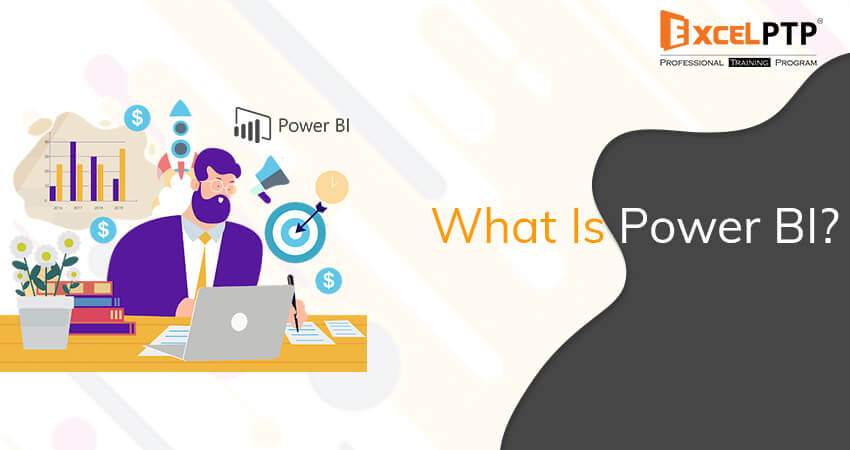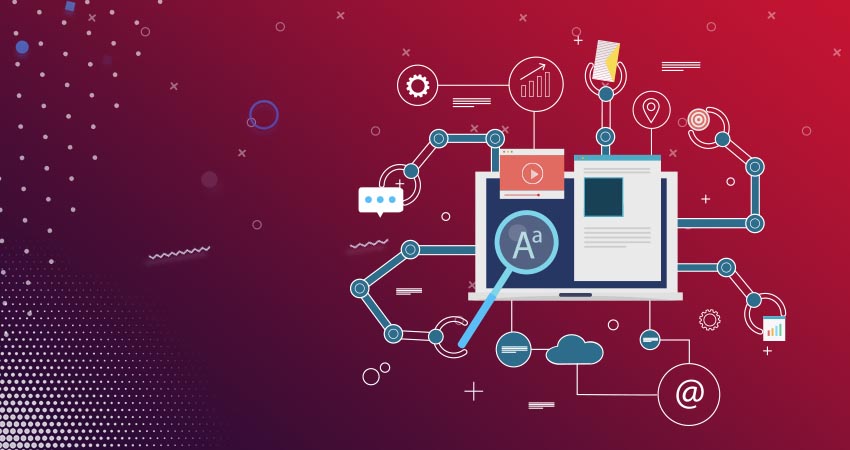Tableau vs Power BI - Which Is Better ?
Posted By:ExcelPTP
July 06,2021

Business intelligence software is a must-have tool available within the toolkit of most business teams. It helps them to gather , enrich, store and visualize all kinds of data to point out to finish users and analyze for making razor-sharp strategic decisions.
If you’re still considering options, this blog is excellent for you . Here we are getting to make a quick Power BI vs Tableau comparison. Why is it important to match BI platforms before making your pick? Because if you begin running a project with the incorrect business intelligence product on board, it won’t bring you any expected benefits.
Tableau vs Power BI Comparison: Tableau and Power BI are the foremost common data visualization tools on the market, supporting business preferences. So, to simplify things for you, we’re getting to make a comparison between Tableau and Power BI… Let’s start.
What is Tableau?

Tableau is a gifted medium for the visual representation of knowledge . With this, the first data are often neatly condensed to a graphical format that’s simple to understand . System Tableau saw the market in 2003. The data generated with Tableau is straightforward to grasp for technicians of all levels. Data analysis is very fast with Tableau, and the visualizations created are in the form of dashboards and worksheets. This helps experts to understand the data that is created using Tableau at any level in an institution.
- Very fast and easy to create visualizations
- Good customer support
- Data Interpreter Story-telling ability
- Tableau offers a feature of visualization
- It helps you to combine shape & brush the data for analysis
- It helps you to handle an outsized amount of knowledge
- Uses scripting languages like R & Python to escape performance for complicated table calculations
- Allows users to make reports, dashboards, and stories using Tableau Desktop
- Less cost of training
Pros Of Tableau as simple we can describe as
- No change management or versioning
- It is expensive, BI, in comparison to other tools
- Importing custom visualization is a bit difficult
- It doesn’t allow easy methods for fixing reports to other applications
- Tableau is suitable just for an outsized organization which may buy licensing costs
- The tableau doesn’t offer support for AI and machine learning
- There is an alliance with other Microsoft products like Power Apps , Dynamics 365, Office 365, and Microsoft Flow, which uses Single Sign-On (SSO)
Cons Of Tableau as simple we can describe as
What is Power BI?

It is a business analytics tool which was developed by Microsoft in the year 2013.It is a Business Intelligence and Data Visualization tool which helps you to convert data from the motley data source into attractive dashboards and BI reports. It also provides multiple software connectors and services.
It is a business intelligence tool that guides you to test data from different origins and adds visualization after the cleaning and integration process. It also offers a feature of Adhoc report generation, which helps within the analysis of the info
- Offers pre-built dashboards and reports for SaaS Solutions
- Provide real-time dashboard updates
- Secure and reliable connection to your data sources within the cloud or on-premises
- Power BI offers agile deployment, hybrid configuration, and a shielded environment
- Data exploration using natural language query
- Extensive database connectivity capabilities Q&A feature published to the web
- Alliance with both Python and R coding to use visualizations
- Post publishing the data into Power BI web service can organize refresh without manual interference
- Power BI backed by the superpower of AI and machine learning
Pros Of Power BI as simple we can describe as
- Dashboards and reports are only divided with users having an identical email domain
- Power Bl will never associate imported data, which is accessed from the real-time network
- Power BI can’t acquire file size larger than 1 GB
- Dashboards never acquire or pass user, account, or other entity framework
Cons Of Power BI as simple we can describe as
Key Differences between Tableau And Power BI
Visualizations:
Power Bi provides numerous data points to supply visualization. Without any coding language, using the drag and drop method, users can create charts, scatter plots within the tableau and it also doesn’t restrict the amount of knowledge points.
Performance:
Tableau can handle vast quantities of knowledge from multiple data sources while Power BI can handle a comparatively bit of knowledge , giving Tableau a further point here.
Data Sources:
Power BI has blocked access to other servers and databases ( SQL, SAP HANA, Oracle Database, etc.)
Tableau has access to an enormous number of varied servers and database sources including JSON, PDF, real statistical reports, Microsoft documents, SQL Server, MySQL, Oracle Redshift, the list goes on.
Learning Curve:
Power BI is easier for the learners compared to Tableau. We’re not suggesting that it’s extremely hard to understand and understand Tableau. It just takes a touch more detailed terminology awareness.
Data Capability:
Every group or workspace can handle up to 10 GB of knowledge in Power BI, and quite 10 GB of knowledge in cloud or Azure. If we discuss an area database, then Power BI simply pulls the info and doesn’t import it.
As for Tableau, it works on the ground structure of columns which allows rare values to be stored for each column.
Integration:
Power Bi can work seamlessly with various data sources like SharePoint, Azure power flow, power apps, 365 Excel and a number of other Microsoft products. While Tableau is employed with numerous outsourcing platforms including both Microsoft-based platforms also as outsource-based tools for a more flexible approach.
Data Shaping:
Power BI offers a flexible query editor that helps you to try to do tons of things easier. It also offers set-documentation and other features while Tableau provides none of these kinds of facilities.
Data Modelling:
Power BI allows PowerPivot dots that are more client-accessible while Tableau offers none of them.
Application:
Power BI is employed for personalized graphics on dashboards and more open source solutions, while Tableau is employed for extended run operations and unplanned analysis.
Scalability:
When it involves scalability for larger data sets, Tableau has much greater scalability compared to Power BI.
It’s time to summarize our analysis of Power BI and Tableau and determine which application can accurately serve your needs.
Obviously, it is impossible to conclude that one app is better than the opposite as Power BI is often a far better choice for little businesses because it provides more accessible business solutions while Tableau allows large quantities of knowledge points to be combined for analysis from various data sources, which is ideal for data scientists.
Tableau and Power BI have their benefits and disadvantages , many similar features and a couple of functionality gaps.
In conclusion, the choice of best business analytics software depends on the dimensions and requirements of your company.
Apart from above many courses where you can make a bright career get more details by clicking on Available Course and get career related guidelines by visiting Excel PTP office near you.








